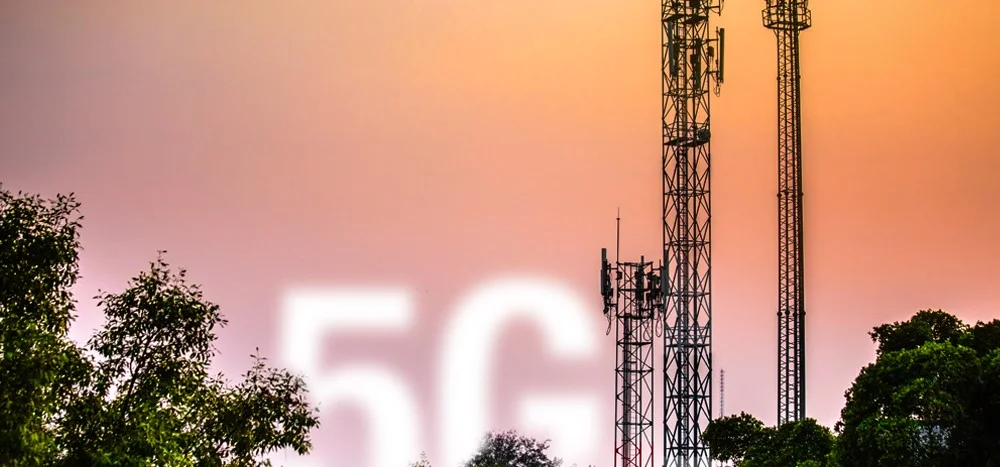We discuss the following topics in this blog:
- 5G in India: Who Hit the Snooze Button?
- Can India Still Wake Up?
In addition to these topics, we shall also be answering the following FAQs:
- What is an Optical Fibre Cable?
- What is WiFi?

Contents
Overview
You’ve seen the 5G ads floating around on TV or in the newspaper. You might have also heard of the 5G network plans, or about the latest 5G smartphones ready to be shipped to India in 2021. Sure, the anticipation has been built.
But where is 5G in India?
If that is the question on your lips, then you’re not alone. Just last month, the standing committee of Lok Sabha on Information Technology released a report asking the same question of the Department of Telecommunications (DoT). Does their report give us a glimpse into the future of India’s 5G roll-out? Let’s find out.
5G in India: Who Hit the Snooze Button?
There’s been a delay in launching commercial 5G in India and there’s no denying that.
As per the Department of Telecommunication (DoT), India should have been 5G-ready by as early as 2018. Three years on, we are still scrambling for 4G networks. Recently, in a list compiled by Global Mobile Suppliers Association ending January 2021, 61 countries were found to already have commercially available 5G networks.
For a global superpower to not find itself on such a list paints a worrisome picture. But it’s not unprecedented at all. In fact, India has been fashionably late when it comes to adopting next-gen technologies. 2G was four years late, 3G almost by ten years, and 4G was deployed seven years after the world had its first connection.
So, where’s the delay?
Among the chief observations made by the parliamentary panel on the status of 5G in India, five key roadblocks have been identified thus far: inadequate spectrum availability, exorbitant spectrum pricing, poor development of test cases, deficient back-haul capacity and low reach of optical fibre across the nation.
All in all, the panel notes that ‘sufficient preparatory work has not been undertaken for launching 5G services in India’ – be it the reserve price of 5G auction not in line with India’s per capita income and the price authorized by other countries, or the annoying lack of formal approvals on 5G testing despite major telecom players have submitted applications for the same in January 2020.
What’s encouraging is that the likes of Airtel and Jio are ready to roll out 5G services by September 2021. But a lack of approvals means they will probably have to skip the testing phase completely. Alternatively, they will have to wait till October 2021 for 5G trials, as per the latest stipulation by DoT. The DoT also told the parliamentary committee that selected areas in India with adequate demand to justify capital expenditure on 5G deployment can expect some form of the roll-out in late 2021 or early 2022.
Worryingly, as India keeps sleeping on the global 5G revolution, thrust areas like healthcare, education, safety, fintech, agriculture, IoT and more will keep suffering from the ignominy of lagging behind other nations – even neighbours like Nepal which are ready to roll out 5G as early as mid-July!
Can India Still Wake Up?
If India remains as bullish as a tiger on its Digital India mission, then you need not worry. As the parliamentary panel notes, all hope is not lost yet – as long as we expedite the approvals and the DoT chalks out a clear roadmap for 5G deployment.
At STL, we favour optimism in every given case. After all, that is what the future is all about. As a leading aggregator of digital networks, we too are invested in expediting 5G deployment in India by developing wireless gear critical for backend 5G infrastructure and teaming up with telcos like Airtel to develop 5G-ready optical fibre networks across India.
So, here’s what we think will happen for the necessary 5G ecosystem to take shape in the country without any further delay.
Firstly, all necessary approvals, right from testing to auction pricing, will be accelerated to provide a stable launchpad to the telcos. The Department of Telecommunications (DoT) has already taken a step in this direction by chopping down the notice period for telcos from one year to six months. This spells good news for operators who can start commercially testing their 5G networks by September and foresee a quicker RoI growth.
Secondly, the DoT will also initiate a dialogue with the Ministry of Defence and the Department of Space to quickly earmark the allocation of requisite spectrum waves. As per the directive of the broadcasting industry, a 100 MHz buffer zone between 5G frequencies and radio/TV frequencies will also be maintained to prevent any disturbance & disruption.
Thirdly, and simultaneously, the telecom laws of the country will also undergo an overhaul. This will enable smoother implementation of 5G and address issues such as net neutrality, consumer rights and traffic management of differential pricing in the context of IoT – an area that will see massive adoption thanks to 5G.
Ultimately, the citizens are eager to embrace the many possibilities that the 5G revolution will bring forth: multi-Gbps speeds, huge network capacity, increased availability & ultra-low reliance. In fact, by 2026, there will be 350 million subscribers in India All we need is for the sleeping giant to wake up & rule the roost on 5G.
FAQs
What is an Optical Fibre Cable?
“An optical fibre cable is a cable type that has a few to hundreds of optical fibres bundled together within a protective plastic coating. They help carry digital data in the form of light pulses across large distances at faster speeds. For this, they need to be installed or deployed either underground or aerially. Standalone fibres cannot be buried or hanged so fibres are bunched together as cables for the transmission of data. This is done to protect the fibre from stress, moisture, temperature changes and other externalities.
There are three main components of a optical fibre cable, core (It carries the light and is made of pure silicon dioxide (SiO2) with dopants such as germania, phosphorous pentoxide, or alumina to raise the refractive index; Typical glass cores range from as small as 3.7um up to 200um), Cladding (Cladding surrounds the core and has a lower refractive index than the core, it is also made from the same material as the core; 1% refractive index difference is maintained between the core and cladding; Two commonly used diameters are 125µm and 140µm) and Coating (Protective layer that absorbs shocks, physical damage and moisture; The outside diameter of the coating is typically either 250µm or 500µm; Commonly used material for coatings are acrylate,Silicone, carbon, and polyimide).
An optical fibre cable is made up of the following components: Optical fibres – ranging from one to many. Buffer tubes (with different settings), for protection and cushioning of the fibre. Water protection in the tubes – wet or dry. A central strength member (CSM) is the backbone of all cables. Armoured tapes for stranding to bunch the buffer tubes and strength members together. Sheathing or final covering to provide further protection.
The five main reasons that make this technology innovation disruptive are fast communication speed, infinite bandwidth & capacity, low interference, high tensile strength and secure communication. The major usescases of optical fibre cables include intenet connectivity, computer networking, surgery & dentistry, automotive industry, telephony, lighting & decorations, mechanical inspections, cable television, military applications and space.”
What is WiFi?
“Put simply, WiFi is a technology that uses radio waves to create a wireless network through which devices like mobile phones, computers, printers, etc., connect to the internet. A wireless router is needed to establish a WiFi hotspot that people in its vicinity may use to access internet services. You’re sure to have encountered such a WiFi hotspot in houses, offices, restaurants, etc.
To get a little more technical, WiFi works by enabling a Wireless Local Area Network or WLAN that allows devices connected to it to exchange signals with the internet via a router. The frequencies of these signals are either 2.4 GHz or 5 GHz bandwidths. These frequencies are much higher than those transmitted to or by radios, mobile phones, and televisions since WiFi signals need to carry significantly higher amounts of data. The networking standards are variants of 802.11, of which there are several (802.11a, 802.11b, 801.11g, etc.).”













